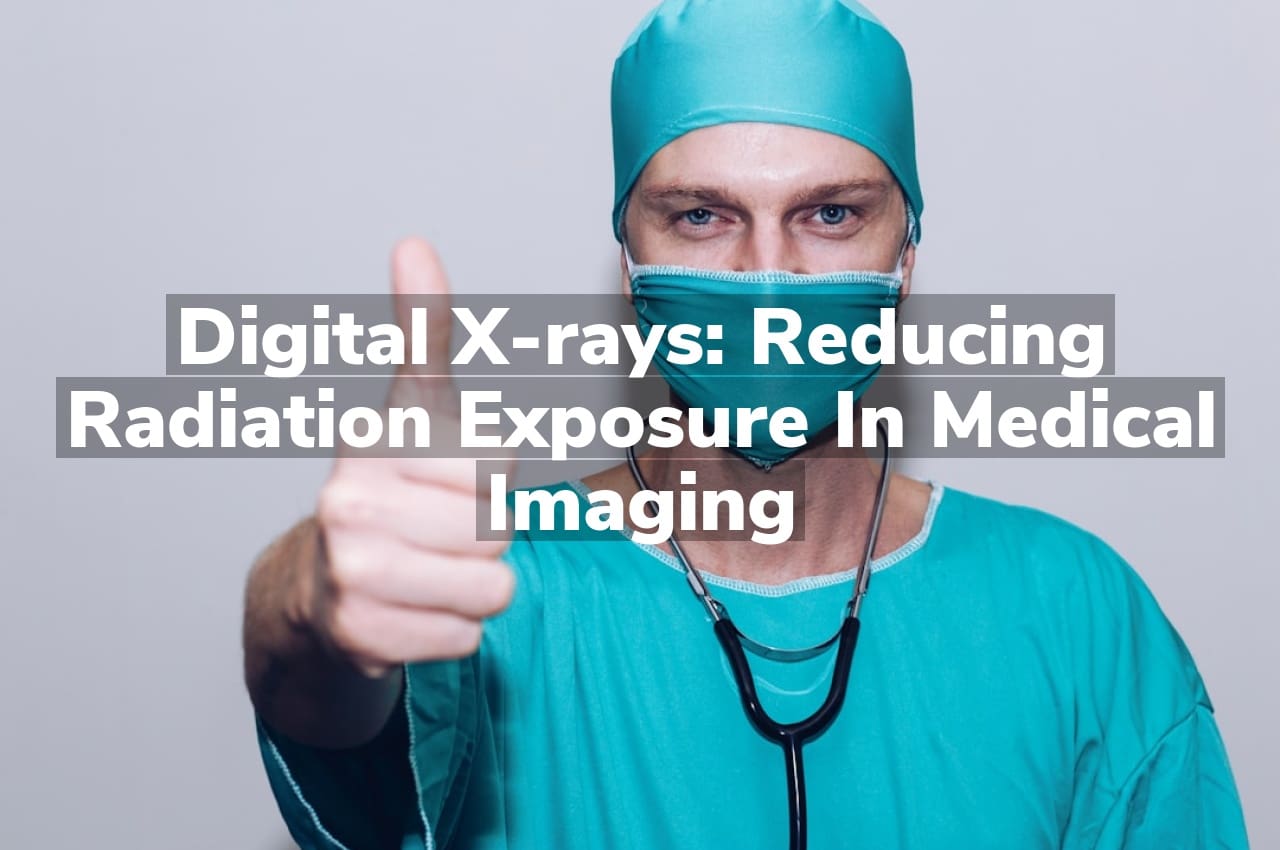Are you aware of how digital X-rays are transforming the landscape of medical imaging by reducing radiation exposure? This advanced technology enhances the safety and efficiency of diagnostic procedures, allowing for clearer images with significantly lower doses of radiation compared to traditional methods. The shift towards digital X-rays represents a crucial step in prioritizing patient health and safety in medical settings.
Evolution of Digital X-ray Technology
The journey of digital X-ray technology has been marked by significant advancements that have transformed medical imaging. Initially, traditional film-based X-rays were the standard in diagnostic imaging, providing valuable insights into the human body’s internal structures. However, these traditional methods often involved higher levels of radiation exposure. With the advent of digital X-ray technology, the medical field witnessed a pivotal shift towards more sophisticated imaging techniques. Digital X-rays now utilize electronic sensors instead of photographic film, which not only reduces radiation exposure but also enhances the clarity and detail of the images produced.
This evolution has also led to improvements in the efficiency and speed of processing images. Unlike film X-rays that require chemical processing, digital images are available almost immediately after they are captured. This immediacy can be crucial in emergency medical situations where time is of the essence. Moreover, digital images can be easily stored and shared electronically, facilitating better communication among healthcare providers. For more insights into how these advancements have impacted smaller medical practices, consider exploring the Cost-Effectiveness of Digital X-rays for Small Medical Practices. This shift not only supports better patient outcomes but also contributes to the broader adoption of digital imaging solutions across various medical settings.
Benefits of Digital Over Analog X-rays
Digital X-rays represent a significant advancement in medical imaging technology when compared to traditional analog X-rays. One of the primary advantages of digital X-rays is their ability to reduce radiation exposure to patients. This is crucial in minimizing the risk associated with cumulative radiation doses over time. Digital systems require less radiation to produce the same quality of image as analog systems, enhancing patient safety during diagnostic procedures.
Furthermore, digital X-rays offer improved image quality, which can be crucial for accurate diagnosis. The images produced are clearer and can be manipulated for better visibility, allowing healthcare professionals to examine fine details without additional exposure. This clarity not only supports better diagnostic outcomes but also contributes to more efficient patient management and care.
Schedule a Digital X-Ray in Lincolnton
Understanding Radiation Dose in X-rays
Radiation dose in X-rays refers to the amount of radiation energy absorbed by the body during an X-ray procedure. This measurement is crucial as it helps gauge the potential risk associated with radiation exposure from medical imaging. X-rays are a form of electromagnetic radiation used widely in healthcare to create images of the inside of the body, aiding in diagnosis and treatment planning. The focus on managing and understanding radiation doses is part of ongoing efforts to ensure patient safety while utilizing these essential diagnostic tools.
Safety Protocols in Digital X-ray Use
In the realm of medical imaging, digital X-rays stand out for their role in reducing radiation exposure compared to traditional film-based methods. Ensuring safety during their use involves a series of standardized protocols that healthcare facilities adhere to. These protocols are designed to minimize the risk to both patients and operators by controlling the dosage and optimizing the imaging process. The implementation of these safety measures is crucial for maintaining the integrity and efficacy of diagnostic procedures in healthcare settings.
For those seeking specialized care in pediatric dentistry, consider visiting Lincolnton Pediatric Dentist, known as Alpine Pediatric Dentistry, which adheres to stringent safety standards in all diagnostic procedures.
Future Trends in Medical Imaging Technology
The landscape of medical imaging technology is continuously evolving, with advancements aimed at enhancing diagnostic accuracy while prioritizing patient safety. Future trends in this field are expected to focus on integrating artificial intelligence and machine learning to streamline image analysis, potentially leading to quicker and more accurate diagnoses. Additionally, ongoing research into new imaging modalities may provide even lower radiation doses and higher resolution images. These innovations are poised to transform how healthcare professionals approach diagnosis and treatment planning, ensuring medical imaging remains at the forefront of medical technology.
Conclusion
For further inquiries, please call us at (704) 479-6777 or read our reviews on Google Maps.





